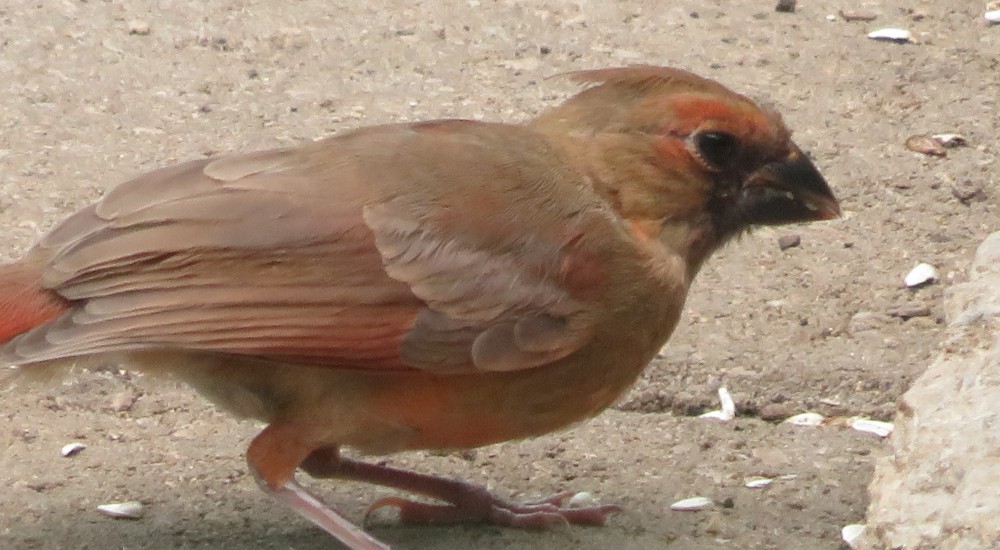With its vibrant red color, dramatic crest and black mask, the male Northern Cardinal is said to entice more people to open a field guide than any other North American bird. Further evidence of its wide-spread appeal, the Northern Cardinal is the state bird for seven states, more than any other species. Unlike the majority of birds who sport duller plumage in winter, males maintain their beautiful color all year long. Since they don’t migrate, we can enjoy these beautiful birds against the backdrop of freshly fallen snow in winter and the deep green leaves in summer. Cardinals forage on or near the ground so during the summer when Crow Island Woods is thick with undergrowth it can be difficult to see them. You may have an easier time spotting them during the winter after trees and shrubs have dropped their leaves.
In June, I was startled when I saw a bald female Cardinal in the Woods. It turns out, this isn’t as unusual as I first thought. Wildlife rehabilitation centers and birding websites receive inquiries about bald Cardinals and bald Blue Jays every summer. There is some debate as to whether the cause is mites or an odd molting pattern. Molting is when birds shed old feathers and new ones grow in. This usually occurs a few feathers at a time but some experts speculate that for some unknown reason these birds lost all their head feathers at once. The other theory is that birds can’t preen their head so mites infest there causing the loss of the feathers. In either case, there is no cause for concern. The birds are healthy and new head feathers grow back in a few weeks.
Another odd looking cardinal you might encounter during the summer, is what appears to be a female Cardinal with a blackish-grey beak rather than a reddish-orange beak. This is actually an immature Cardinal. Both genders start out with the coloring of a mature female but lack the colorful beak. Throughout the summer and fall these young birds slowly molt, their beak color gradually changes and by winter males have developed their bright red appearance.
Happy Birding!





Pingback: Birds In Crow Island – Save Crow Island Woods